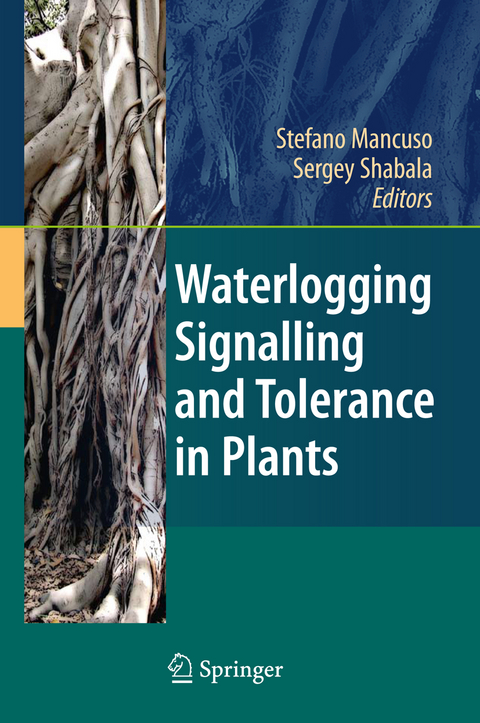
Waterlogging Signalling and Tolerance in Plants
Springer Berlin (Verlag)
978-3-642-42560-8 (ISBN)
In the last half century, because of the raising world population and because of the many environmental issues posed by the industrialization, the amount of arable land per person has declined from 0.32 ha in 1961-1963 to 0.21 ha in 1997-1999 and is expected to drop further to 0.16 ha by 2030 and therefore is a severe menace to food security (FAO 2006). At the same time, about 12 million ha of irrigated land in the developing world has lost its productivity due to waterlogging and salinity. Waterlogging is a major problem for plant cultivation in many regions of the world. The reasons are in part due to climatic change that leads to the increased number of precipitations of great intensity, in part to land degradation. Considering India alone, the total area suffering from waterlogging is estimated to be about 3.3 million ha (Bhattacharya 1992), the major causes of waterlogging include super- ous irrigation supplies, seepage losses from canal, impeded sub-surface drainage, and lack of proper land development. In addition, many irrigated areas are s- jected to yield decline because of waterlogging due to inadequate drainage systems. Worldwide, it has been estimated that at least one-tenth of the irrigated cropland suffers from waterlogging.
Stefano Mancuso, Professor an der Universität Florenz, leitet das Laboratorio Internazionale di Neurobiologia Vegetale und ist Gründungsmitglied der International Society for Plant Signaling and Behavior. Mit über 250 wissenschaftlichen Publikationen gilt er international als der Spezialist zum Thema. Er sprach 2010 auf der TED-Konferenz, nahm mit Experimenten am europäischen Space Shuttle-Programm teil und stellt auf der EXPO 2015 in Mailand ein neuartiges Pflanzenkultivierungsprojekt vor.
Whole-Plant Regulation.- Oxygen Transport in Waterlogged Plants.- Waterlogging and Plant Nutrient Uptake.- Strategies for Adaptation to Waterlogging and Hypoxia in Nitrogen Fixing Nodules of Legumes.- Oxygen Transport in the Sapwood of Trees.- Intracellular Signalling.- pH Signaling During Anoxia.- Programmed Cell Death and Aerenchyma Formation Under Hypoxia.- Oxygen Deprivation, Metabolic Adaptations and Oxidative Stress.- Membrane Transporters in Waterlogging Tolerance.- Root Water Transport Under Waterlogged Conditions and the Roles of Aquaporins.- Root Oxygen Deprivation and Leaf Biochemistry in Trees.- Membrane Transporters and Waterlogging Tolerance.- Ion Transport in Aquatic Plants.- Agronomical and Environmental Aspects.- Genetic Variability and Determinism of Adaptation of Plants to Soil Waterlogging.- Improvement of Plant Waterlogging Tolerance.
| Erscheint lt. Verlag | 14.11.2014 |
|---|---|
| Zusatzinfo | XIX, 294 p. |
| Verlagsort | Berlin |
| Sprache | englisch |
| Maße | 155 x 235 mm |
| Gewicht | 486 g |
| Themenwelt | Naturwissenschaften ► Biologie ► Botanik |
| Weitere Fachgebiete ► Land- / Forstwirtschaft / Fischerei | |
| Schlagworte | Logging • Morphology • nitrogen • nutrient uptake • Regulation • rhizosphere • Transport • Tree |
| ISBN-10 | 3-642-42560-7 / 3642425607 |
| ISBN-13 | 978-3-642-42560-8 / 9783642425608 |
| Zustand | Neuware |
| Haben Sie eine Frage zum Produkt? |
aus dem Bereich


